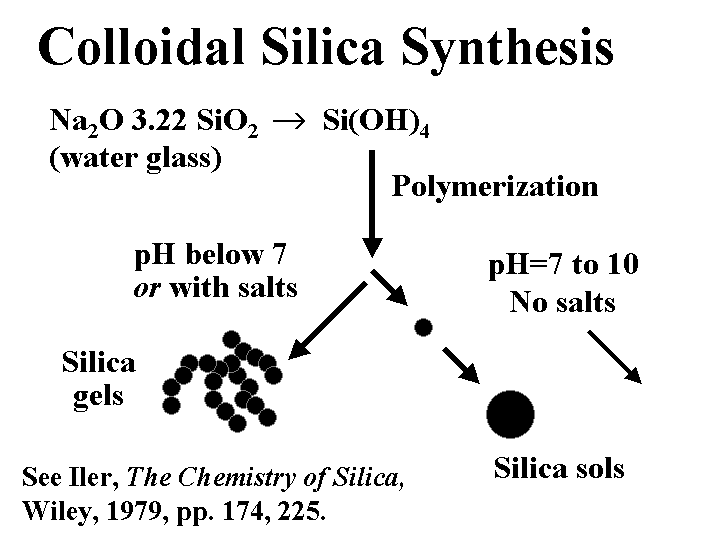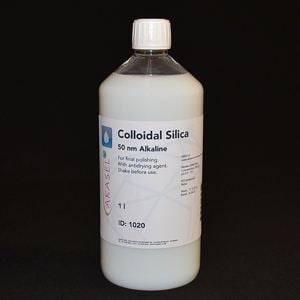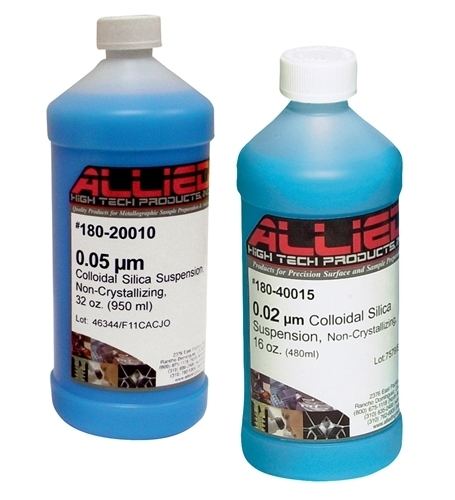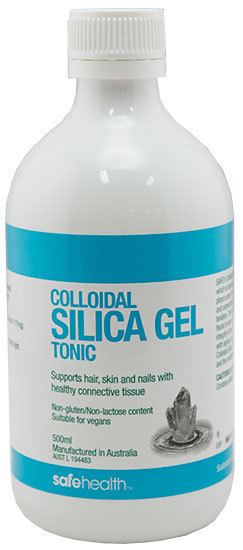 | ||
Colloidal silicas are suspensions of fine amorphous, nonporous, and typically spherical silica particles in a liquid phase.
Contents
Colloidal silica bleach an unhealthy union
Manufacture

Colloidal silicas are most often prepared in a multi-step process where an alkali-silicate solution is partially neutralized, leading to the formation of silica nuclei. The subunits of colloidal silica particles are typically in the range of 1 to 5 nm. Whether or not these subunits are joined together depends on the conditions of polymerization. Initial acidification of a water-glass (sodium silicate) solution yields Si(OH)4.

If the pH is reduced below 7 or if salt is added, then the units tend to fuse together in chains. These products are often called silica gels. If the pH is kept slightly on the alkaline side of neutral, then the subunits stay separated, and they gradually grow. These products are often called precipitated silica or silica sols. Hydrogen ions from the surface of colloidal silica tend to dissociate in aqueous solution, yielding a high negative charge. Substitution of some of the Si atoms by Al is known to increase the negative colloidal charge, especially when it is evaluated at pH below the neutral point. Because of the very small size, the surface area of colloidal silica is very high.

The colloidal suspension is stabilized by pH adjustment and then concentrated, usually by evaporation. The maximum concentration obtainable depends on the particle size. For example, 50 nm particles can be concentrated to greater than 50 wt% solids while 10 nm particles can only be concentrated to approximately 30 wt% solids before the suspension becomes too unstable.
Applications

